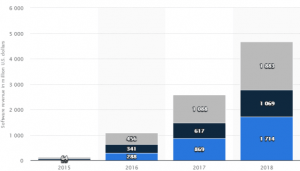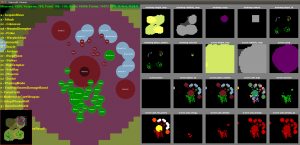When you are watching movies or playing video games, do you want to join the fictional world and start a new life in it? Virtual reality (VR) technology could make your dream come true. Scientifically, VR is a computing technology which will generate an immersive environment similar to the real world.

Figure 1 The Matrix describe a mimic virtual world created by machine
https://io9.gizmodo.com/warner-bros-is-considering-a-return-to-the-matrix-1793280066
There are many fictional work about VR. In The Matrix series the whole world people lived in is a virtual reality made sentient machines and humans are harvested for their bioelectricity as energy sources to machines. Another work, Sword Art Online describes VR based video games in near future world. VR games in this novel series could give users a fully immersed experience by simulating human’s five senses directly through their brain. Players can control their characters in the games just like controlling our own body in real world. The VR helmet worn by players could also kill them since it could send strong electric signal to their brain.

Figure 2 Sword Art Online shows how can we use VR to build a world
https://www.quora.com/Do-sword-art-online-players-need-to-sleep
So far, the VR technology and devices are not as powerful and dangerous as they are depicted in fictions. Currently VR equipment like headsets could generate realistic sounds, images and other sensations and users could “look around” to see the virtual world through the headset which giving better experience than screens. However, these sensations are still delivered by our eyes and ears and we also need some external control systems to connect with the devices to make any movement in the virtual environment such like infrared sensors or wearing some wireless controllers on your body.

Figure 3 The rapid growing VR industry
https://thenextweb.com/contributors/2018/03/11/5-virtual-reality-trends-watch-2018/
VR is a growing industry as its users increased from 200 thousand in 2014 to 90 million in 2017. The industry is predicted to worth 5.2 billion US dollar in 2018 and $45 billion by 2025. This prosperity would introduce more investment and research in this area. Hopefully it will give more “realer” experience to users. Recently a 360 degrees headphone was introduced by HEAR360. It is said to produce a more immersive sound environment by using 8 microphones around your head so you can hear sound like it is in front of, above, below, around, or behind your head. There is also some research on using your muscles to control VR and giving sensible force feedback to your body. Directing connection from the devices to your brain might be still fictional as current research about our brain is not so advanced and there are many ethical and health problems related to it. Even the current “not real enough” VR technology has raised many concerns about health, safety and privacy protection while using VR devices. For example, Virtual Boy, released by Nintendo in 1995 with headpiece displayer, was reported to cause dizziness, nausea, and headaches. Long-time exposure to virtual environment could give similar discomforts. The health problems related to immersive experience could slow down the development of VR if no convincible resolution is given.

Figure 4 A headphone giving sound around your head
https://techcrunch.com/2018/02/21/hear360-begins-shipping-its-asmr-ready-omni-binaural-microphone-the-8ball/
With wide applications in video games, movies, educational and military training, health care etc., the emerging VR industry attracts many researchers, investors and users. We are not sure if we can enjoy another life in virtual worlds in the future, but the advancing VR technology give us the hope.
by Jun Ling
References:




